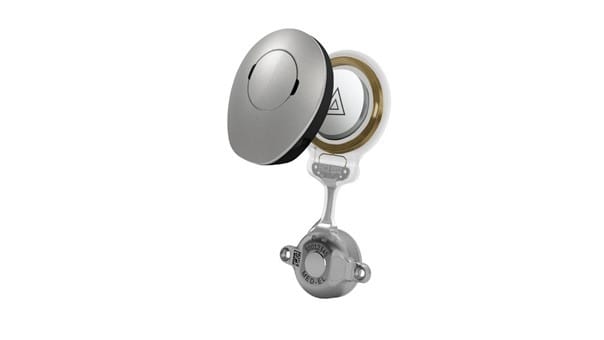Wissenswertes über Knochenleitungsimplantate
Knochenleitungsimplantate werden bei anatomischen Fehlbildungen, Schallleitungs- und kombiniertem Hörverlust eingesetzt. Sie sind für Menschen geeignet, deren Außen- und/oder Mittelohr Geräusche nicht ausreichend an das Innenohr überträgt.
Während Cochlea-Implantate das Hören bei hochgradiger Innenohrschwerhörigkeit ermöglichen, richten sich Knochenleitungsimplantate an Menschen, die unter einer Schallleitungsschwerhörigkeit, einem kombinierten Hörverlust oder anatomischen Fehlbildungen leiden. Wie funktioniert ein Knochenleitungsimplantat und welche Arten von Knochenleitungsimplantaten gibt es? Knochenleitungsimplantate übertragen die Schallwellen auf den Schädelknochen und weiter auf die Hörschnecke im Innenohr. Das Außen- und auch das Mittelohr werden dabei umgangen.
Aufbau eines Knochenleitungsimplantats
Das Knochenleitungsimplantat besteht in der Regel aus einem inneren und einem äußeren Teil. Der äußere Teil ist der Audioprozessor. Er nimmt den Schall auf, wandelt diesen in elektrische Signale um und leitet ihn an das Implantat weiter. Dieser innere Teil wandelt das elektrische Signal in mechanische Schwingungen um und überträgt sie an den Schädelknochen. Es gibt verschiedene Arten von Knochenleitungsimplantaten – aktive und passive Knochenleitungsimplantat-Systeme. Bei einem aktiven Knochenleitungsimplantat bleibt die Haut des Trägers intakt.
Arten von Knochenleitungsimplantaten
Das Knochenleitungsimplantat wird direkt im Schädelknochen verankert. Dazu ist eine kleine Operation notwendig. Dabei wird ein Titanimplantat unter der Haut des Patienten in den Knochen hinter dem Ohr eingesetzt. Zudem gibt es Lösungen, bei denen der Schädelknochen über eine perkutane Titanschraube stimuliert wird, dabei bleibt eine Wunde in der Kopfhaut. Beide Hörlösungen bieten eine hohe Klangqualität.
Durch Schädelknochen hören ist ganz natürlich
Vielleicht haben Sie sich schon einmal gefragt, warum sich Ihre Stimme so ganz anders anhört, wenn Sie sich aufnehmen oder sich in einem Video hören? Das liegt daran, dass ungefähr die Hälfte des Klangeindrucks durch unsere Schädelknochen an das Innenohr übertragen werden, wenn wir beim Sprechen unsere eigene Stimme hören. Nehmen wir unsere Stimme auf, fehlt der von den Knochen weitergeleitete Klang. Unsere Schädelknochen vibrieren nur gering, daher können wir die Schallübertragung auch nicht fühlen, aber hören.

Funktion
Knochenleitungsimplantate sind Hörsysteme, die mithilfe von kleinen Vibrationen am Schädelknochen Schallsignale von außen direkt an das Innenohr weiterleiten.
Mehr zu Funktion
Produkte & Modelle
Es gibt verschiedenen Arten von Knochenleitungsimplantaten. Dazu zählen auch teilimplantierte, knochenverankerte Modelle. Außerdem haben Sie Auswahl bei den Audioprozessoren.
Produkte & Modelle
Kosten
Erfüllen Patienten die audiologischen und medizinischen Kriterien für ein Knochenleitungimplantat, übernimmt die gesetzliche Krankenversicherung die Kosten vollständig. Was bedeutet das genau? Hier finden Sie Antworten.
Mehr zu Kosten
Vorteile & Nachteile
Häufig hören Menschen nach der Implantation eines Knochenleitungsimplantats sehr gut und berichten von einer natürlichen Klangqualität. Ohne dieses Implantat wäre das nicht möglich.
Vorteile & Nachteile
Operation
Das Knochenleitungsimplantat wird direkt im Schädelknochen verankert. Dazu ist eine kleine Operation notwendig. Bei einem Teilimplantat wird der Schädelknochen über eine durch die Haut wirkende Titanschraube stimuliert. Beide OPs sind kleine Routineeingriffe, die zwischen 30 und 60 Minuten dauern.
Mehr zur Operation









